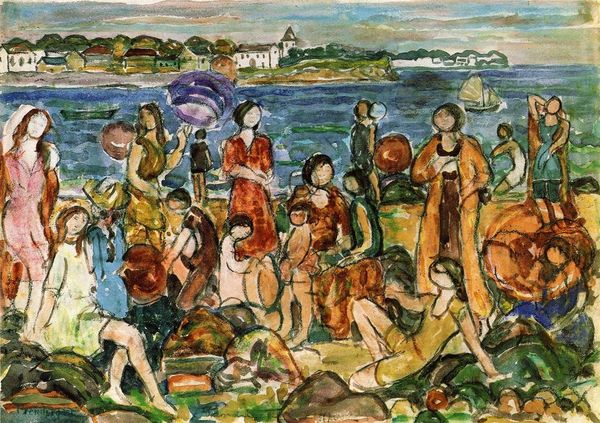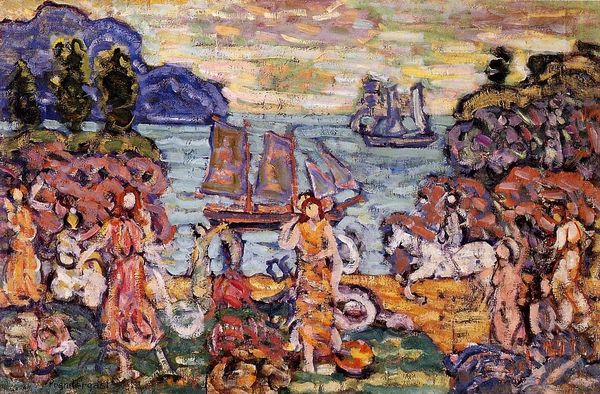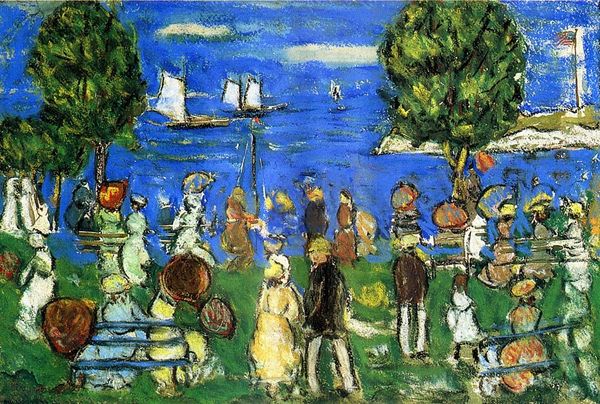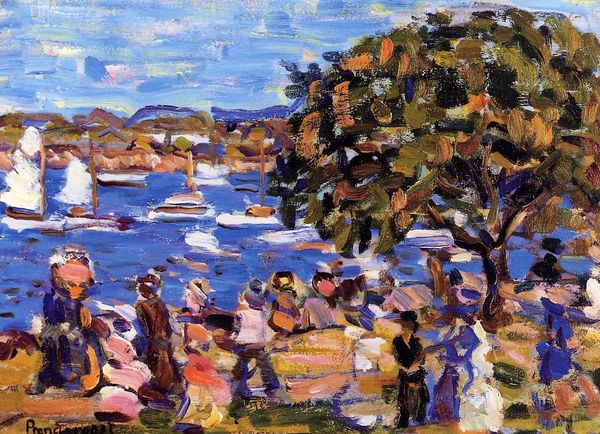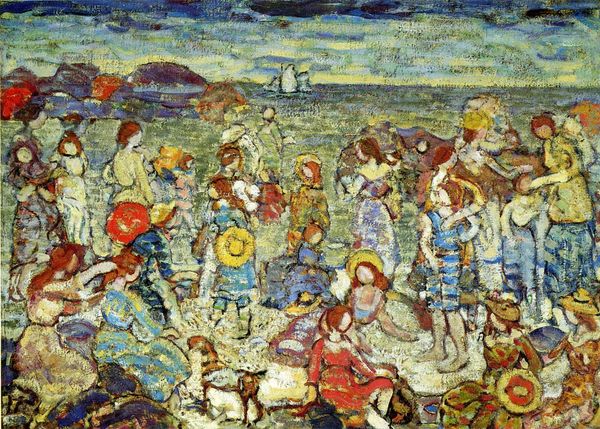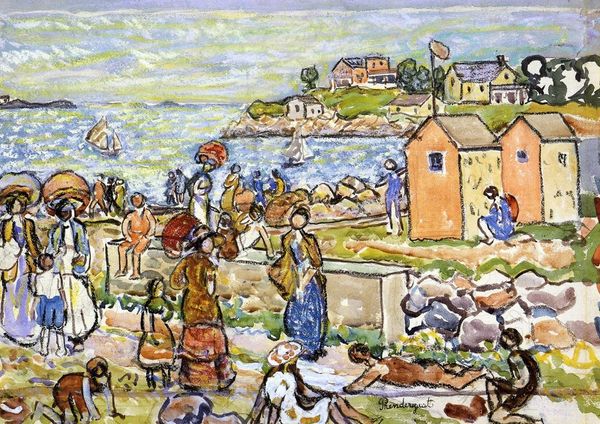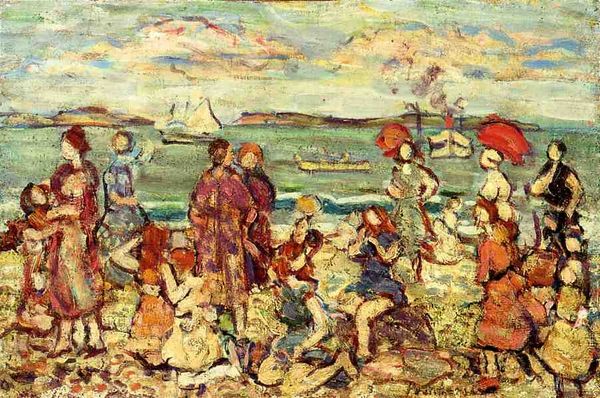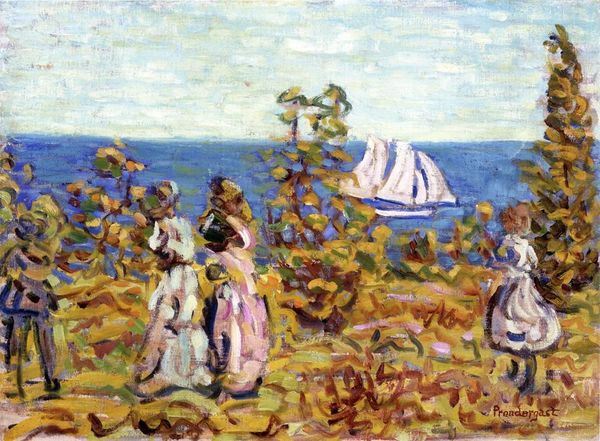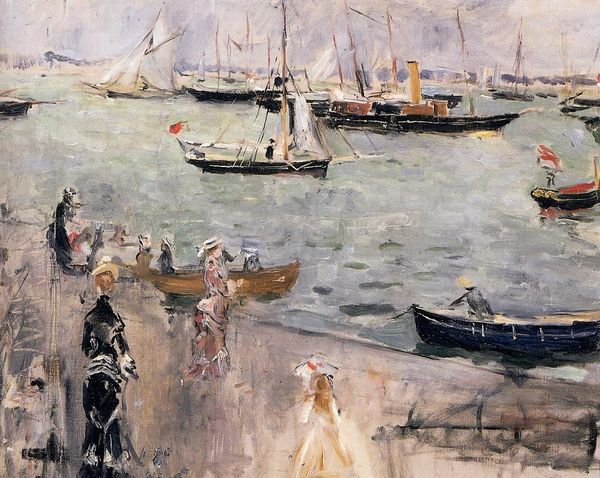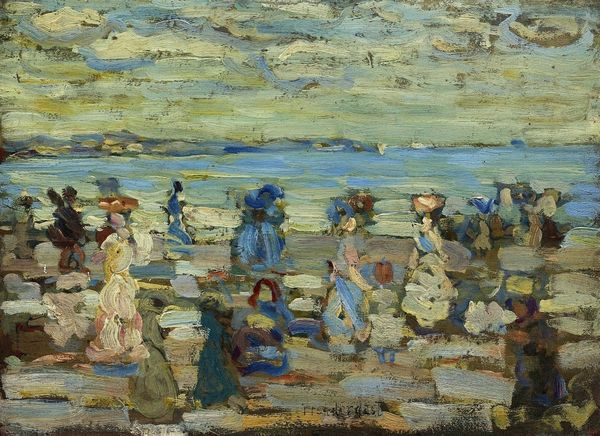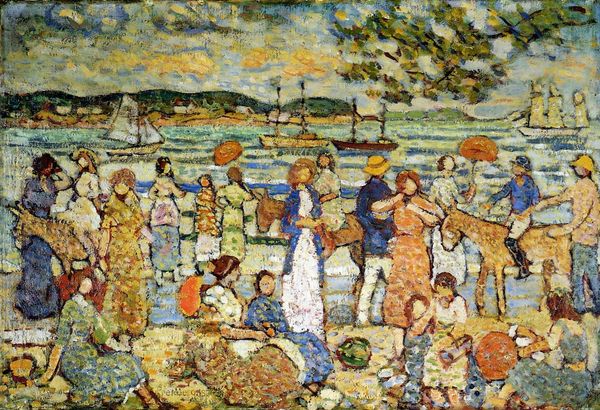
Dimensions: 34.29 x 49.53 cm
Copyright: Public domain
Curator: Maurice Prendergast's watercolor "Beach Scene, New England," created around 1919, captures a bustling seaside tableau. What strikes you most when you look at it? Editor: A kind of breezy detachment. There is activity, yes, but everything is so muted. Even the colors, pale as they are, seem to exist behind a veil of historical privilege, a separation from labor. Curator: Interesting observation. I am struck by how Prendergast simplifies the forms of the figures and objects. The daubs of color create a shimmering effect, typical of plein-air Impressionism and hinting perhaps, at an escapist ethos during the interwar period. The painting echoes traditional Western figuration; note how Prendergast centers his anonymous beachgoers within the established pictorial traditions of genre painting. Editor: True, but look closely—Prendergast disrupts those conventions. The figures, primarily women, are rendered with almost no individualizing detail. Are they stand-ins, archetypes within this space? It is all brushwork and fleeting moments, resisting deeper engagement, almost denying them interiority. Even their fashionable beach wear of the period serves only to blend them further within the privileged, homogenous grouping. Curator: The lack of sharp detail does lend an air of mystery. The blurred lines perhaps speak to memory and the transient nature of summer leisure, the fleeting quality of experience. Editor: Maybe so, yet I can't ignore that it's precisely *who* has access to such fleeting experiences, what social apparatus allowed for their existence. It also feels symbolic to see these female figures so indistinct while situated directly along the coastline. Land, nation, identity--all seem interwoven through a subtly complex and perhaps unintentional social critique. Curator: A compelling perspective on Prendergast's waterside figures. His application of watercolor in delicate layers, creating a luminous yet somewhat ambiguous scene, offers much to unpack. It seems both painterly and psychological when you consider its layers of symbol-making. Editor: Yes, indeed. The deceptively simple scene makes one consider broader sociopolitical aspects regarding historical perspectives on both leisure and identity. It may also reveal a continuity that persists today.
Comments
No comments
Be the first to comment and join the conversation on the ultimate creative platform.
